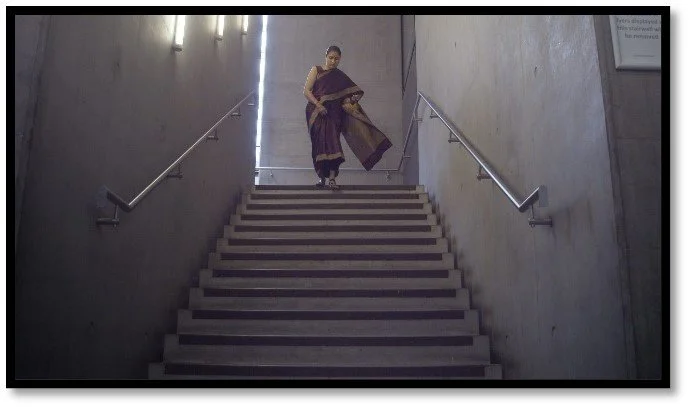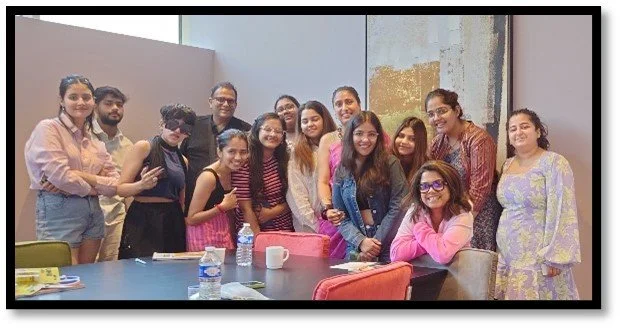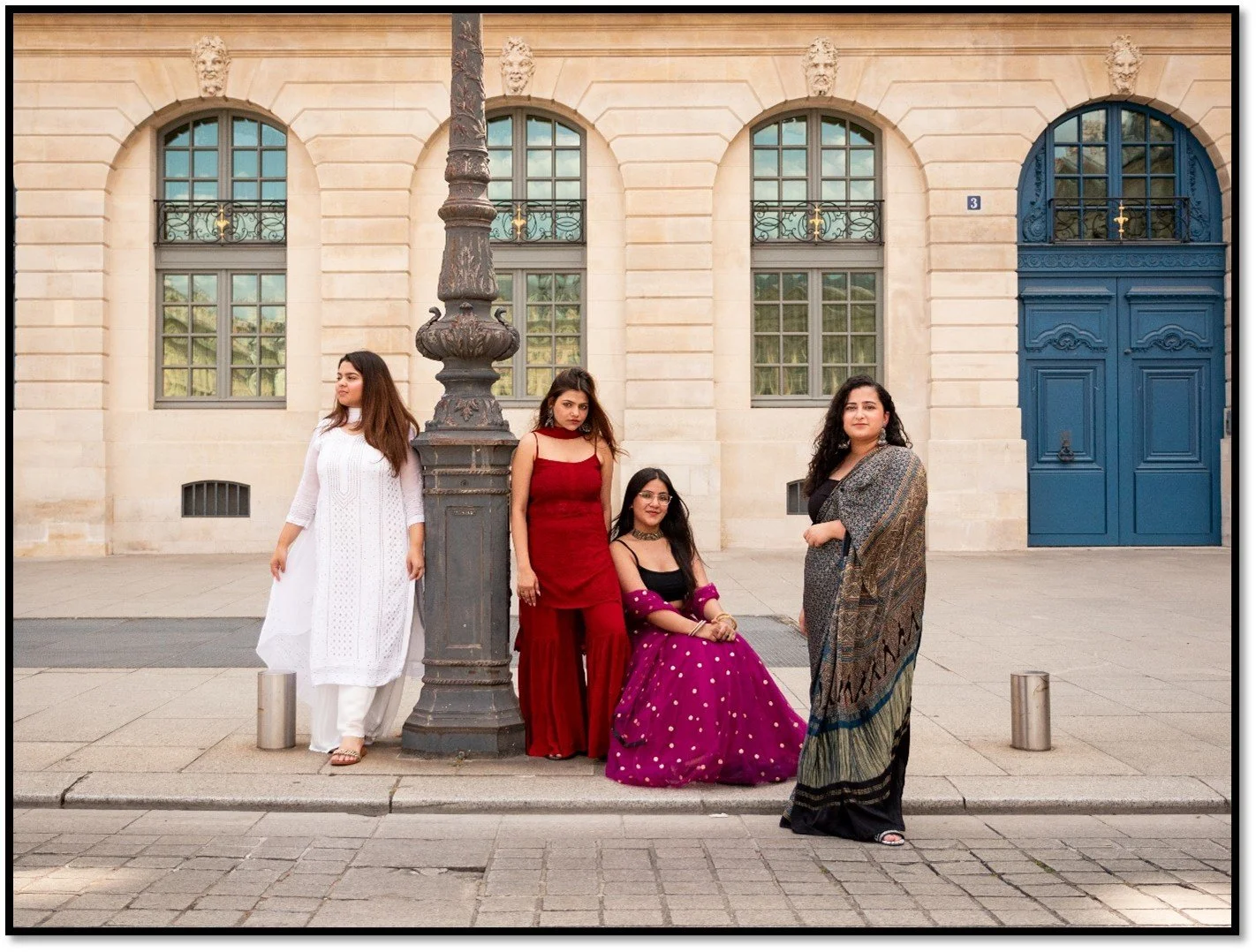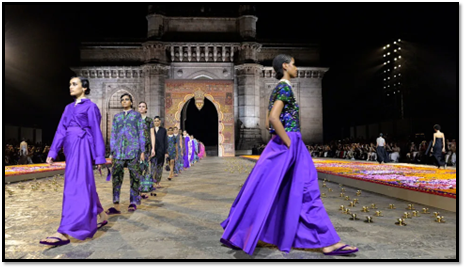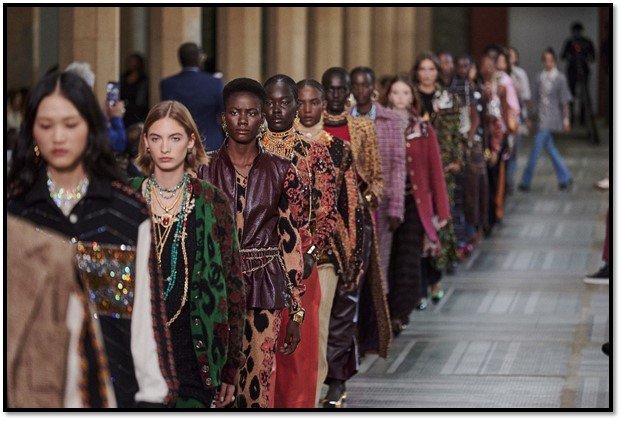Written by Sukhwinder Sagoo-Reddy FHEA, MA
Email: s.sagooreddy@arts.ac.uk
Copyright© Sukhwinder K Sagoo-Reddy 2023
In the fashion industry and amongst designers worldwide there is some, if not a complete, move towards cultural appreciation. Culture, diversity, and differentiation are key factors for a luxury brand, but they can also emerge through individuals who walk with confidence in their traditional ethnic attire.
Let us first observe through the lens of the artisans: we understand that textile craftsmanship is part of cultural heritage and has been an important element in building cultural identities. This is reflected in the traditional garments of different communities and indigenous people globally.
When you consider cultural sustainability in the fashion world, the source (such as the object or belief) is threatened by a system of power or rather the people who profit from it and have no care about the source itself. These people have been able to find a way to steal from others – sometimes oppressed cultures – and use these ideas however they choose to.
The definition of ‘Cultural Sustainability’ is vital since the root of cultural appropriation is an imbalance of power involving lack of consent, credit, and compensation to marginalised communities. “Cultural sustainability refers to the idea of preserving and sustaining traditional cultures in the face of globalization and modernization.” (Blog, Nulli Rinalducci, S. 2023) There should be no sustainability without cultural preservation.
Nonetheless fashion could be a force for good rather than the exploiting of traditional knowledge and expressions. We could simply create systems that value and celebrate cultural appreciation and allow for the continuation of age-old culture expressions – this is what we mean by cultural sustainability. Luxury brands worldwide need to promote cultural textiles and expression by collaborating with artisans as partners, which would lead to healthier practices in fashion. This would be financially sustainable for communities and introduce an element of development for those local economies.
The second observation is through individuals wearing their traditional attire in British institutions, or the corporate domain. As a South Asian British practitioner at the University of the Arts London (UAL), I had not seen many students or staff members in a sari - In fact, I never noticed anyone in ethnic attire apart from something such as a kameez worn over a pair of jeans. I took the decision to experiment with wearing a sari as a student and staff member, and intriguingly the sari revealed an embodiment of my identity and culture. A profound sense of playfulness was also enacted:
“I find pleasure in draping yards of soft fabric fluidly over my body; adjusting the folded pleats carefully and tucking them into the petticoat, and then pulling the material to suit a particular form, translating into a sartorial sense of elegance. The sari creates an embodiment of grace and conceals as much as it reveals. It reflects and communicates, evoking a feeling of nostalgia, memory, and identity. I reach out to a ruby red satin-silk sari and unravel the metres of fabric, which feels smooth against my skin; the smell derived from sericin in the silkworm gum and the rustling sound of silk determines its quality. The cropped sleeveless blouse has seven hooks and eyes secured down the centre front seam. I add stylish trainers to the attire and wear a large coat to cover any skin that is revealed. I nervously hop onto the tube expecting to have eyes judging me, but it is surprisingly quiet. I felt strangely nauseous, exposed, and apprehensive – yet comfortable. After hearing compliments from peers, I felt at ease. I vividly remember someone say, “You look like you are dressed to go to an event.” This led me to ask, is traditional ethnic dress not deemed professional? is it not appreciated?” (Author’s Personal Reflection: Sagoo-Reddy, S. 2022)
Fig. 1 Sari wearing at CSM.
This is a statement about how a South Asian woman might convey professionalism through wearing a sari in a British institution and how it might be a performative agency disrupting social order and hierarchies through its colonial history.
The sari can play a key role in conveying identity, nationality, culture, regions, castes, and status. Tarlo explores dress and identity in India, similarly, stating that: “Clothes are frequently perceived as expressions and even extensions of the people who wear them” (Tarlo, E. 1996, p.16) and she reveals how individuals have used clothes to emphasise power, authority, define or conceal identity, and even instigate social change just as Gandhi did through the wearing of the loin cloth.
After the first experiment of wearing traditional ethnic garb, I gradually adopted the idea of wearing sari as a lecturer to exemplify my identity. I wanted to seize the idea of wearing the sari wherever I go in the world and to be appreciated. I had the opportunity of teaching in Paris around the theme of ‘Culture, Diversity & Identity’ in contemporary fashion and I opted for a bold, warm, fuchsia pink tussar silk sari and a stone colour blouse complimented with black contemporary jewellery. There was a sense of apprehension teaching Indian students from the Pearl Academy, since I was meeting them for the first time. Once we introduced ourselves to each other and undertook activities it led to an engaging session. Perhaps representation played a part here and it is key that students from a diverse background see themselves reflected in the curriculum impacting their personal experiences which they openly shared.
Fig 2. Students from Pearl Academy
Cultures, identities, and positive fashion ideas were shared by the students and valued. Wearing the sari in class created a pedagogic creative space to promote the practice of appreciation. Hours later, we gathered at one of the city’s most famous and beautiful neoclassical squares, Place Vendȏme, in our traditional outfits for a photoshoot. The Place Vendôme has been renowned for its fashionable and deluxe hotels such as the Ritz. Many famous dress designers have had their salons in the square. A sense of empowerment and owning the surrounding surfaced to our minds. The group of students and lecturers changed into their traditional attires and walked with poise around the charming Place Vendôme unveiling their identities, nationality, culture, regions, beauty, colour, and sophistication.
Fig 3. Photo by Moea Creugnet
Prior to the photoshoot, Genevieve Muwana, an African luxury brand management lecturer who designed and delivered a luxury brand management immersive experience for the Pearl Academy students said, “I wanted my students to feel proud of their culture and realise that there is a mounting appreciation for their cultural heritage. I wanted them to proudly flaunt their sari and traditional attire and make a statement. I hope that this experience will encourage them to be actors and actively participate in the growth of the luxury industry in India.”
Fig 4. Photo by Moea Creugnet
One example of a luxury brand recognising the value of Indian culture is Christian Dior, commonly known as Dior, a French multinational luxury fashion controlled and chaired by French businessman Bernard Arnault, who also heads LVMH. In 2016, Maria Grazia Chiuri became the first female Creative Director of Dior to achieve a platform promoting India’s female workers and invest in traditional craftmanship. As part of a long-term goal, she has supported the Mumbai-based Chanakya School of Craft, which specialises in fine Indian embroidery, teaching traditional techniques to more than 1,000 women from low-income groups. The Dior 2023 show took place in Mumbai, paying homage to India’s rich culture, colours, and craftmanship. Culture sustainability and preserving traditional Indian craft was voiced in an interview by Chiuri stating “Indian craft represents age-old practices layered with interwoven cultures and knowledge from the incredible and vast continent that is India. I like to think that the influence goes both ways with this collaboration, a continuous dialogue that reflects on the meaning of embroidery.” (Thomas, F. 2023)
Fig 5. Dior's show took place in the shadow of one of the country’s most famous colonial landmarks: Mumbai’s Gateway of India. Photo credit by Getty Images.
Fashion Designer, Virginie Viard is the female creator behind Chanel’s new chapter and has been deliberating for a few years in going beyond the runway show in bringing the fashion world to the country. A Chanel show arrived on African soil in Dec 2022 and was the first couture-level show staged by a Western fashion house in sub-Saharan Africa. The French label returned to former French colony Senegal to discover new interactions between two different cultures. The collection paid tribute to the country in jewellery and bags emblazoned with Senegalese lion, tailored silhouettes that drew inspiration from Congo’s Sapeur subculture and beaded materials sourced from local artisans. (Dazed Digital, Dec 2022)
Fig 6. Chanel Metiers d’art show in Dakar, Senegal - Photo credit: Chanel.
The Chanel Metiers d’art show in Dakar, Senegal is a superb case of cultural appreciation. Fashion Designer, Virginie Viard from Chanel eloquently described this perception expressing, “Going to Dakar means engaging in a dialogue with the country that welcomes us. The honour bestowed upon us must go hand in hand with concrete actions in terms of creative dialogue, transmission of know-how and sustainable development." (Klerk, A. 2022)
Furthermore, Chanel showcased Senegalese craftmanship in an exhibition titled, “On the Thread: From Dakar to Paris,” at their Chanel 19M gallery. The ambition of the showcase was to highlight Senegal’s rich textile traditions which dates back centuries. Bruno Pavlovsky, the chairman of Chanel SAS and Chairman of the 19M space said, "This dialogue brings in artists from all walks of life and especially some based here in Dakar. We wanted to shed light on these ancestral crafts, around the hand, around weaving and embroidery.” (Noelle Vono Kana, L. 2023).
A phenomenal start to a love affair of textiles and craftmanship between two different countries, but I hope to see many more luxury brands work in partnership with artisans globally.
***********************
Images & photos
Fig. 1 Sukhwinder Sagoo-Reddy wearing a sari at Central Saint Martins (CSM) campus. Photo by Blake, J (2022)
Fig. 2 Photo of the student from Pearl Academy in Paris.
Fig. 3 Photo by Moea Creugnet, taken place at Place Vendome, Paris.
Fig. 4 Photo by Moea Creugnet, taken place at Place Vendome, Paris.
Fig. 5 Dior Collection at Mumbai’s Gateway in India - photo credit by Getty Images
Fig. 6 Métiers d'Art collection in the Senegalese capital of Dakar. Photo credit by Chanel
References
Klerk, A, 2022. Harper Bazaar, Article. [Accessed on 28-08-23 -m
Ikpeh, C. Rara Education Project, Blog. 2023. [Accessed on 27-08-23]
Noelle Vono Kana, L. 2023. Africa News. Accessed on 28-08-23]
Nulli Rinalducci, S. Blog, Sustainability Success. 2023 [Accessed on 28-07-23]
Tarlo, E. 1996. Clothing Matters: Dress and Identity in India, University of Chicago Press, Chicago.
Thomas, F. 2023. Conde Nast Traveler, Article. [Accessed on 28-0-23]


